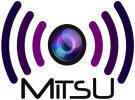Project ID: CPP 2012/1-5
Financing contract number: 340 E/ 30.06.2014
Project name: next generation MultImedia efficienT, Scalable and robUst delivery
Project acronym: MITSU
Project partners: SC Teamnet World Professional Services SRL (coordinator), SC Autonomous Systems SRL (partner)
Funded by UEFISCDI – Innovation Program – European Cooperation Subprogram Eureka – Eurostars
Project total amount: 2.809.068,00 lei
Project grant amount: 1.608.627,00 lei
Project Director:
Alina Mogoş
SC Teamnet World Professional Services SRL
Adress: 4-8 Nicolae Titulescu Bvd., America House, East Wing, 7th Floor
E-mail: Alina.Mogos@teamnet.ro
Phone: +4 021 311 66 31
Fax: +4 037 287 92 97
Celtic Plus project page https://www.celticplus.eu/project-mitsu/
European project page http://mitsu-project.eu/
Contracting Authority: UEFISCDI (http://uefiscdi.gov.ro/)
Project Description
Consortium members
Participating countries: Poland, Spain, Turkey, Romania, Austria
Partners:
PSNC – Poznań Supercomputing and Networking Center, AGH – University of Science and Technology, Adam Mickiewicz University (UAM), Miejskie Przedsiębiorstwo Komunikacyjne w Poznaniu Sp. z o.o, Instituto Tecnológico de Aragón (ITA), EBESIS, ADTEL Sistemas de Telecomunicacion S.L., Arantia, Embou, Argela, C2TECH (C Tech Bilisim Tek. Tic. Ve San. A.S.), TeamNet World Professional Services, Autonomous Systems S.R.L., PSMEDIA, Austrian Institute of Technology, RTV Regional Fernhehen GmbH, Alpen Adria University Klagenfurt, Regional Television Salzburg, GTN Solutions
Project Objective:
The objective of MITSU (next generation MultImedia efficienT, Scalable and robUst Delivery) is to study and develop the next generation of multimedia streaming systems to be used over wireless networks. Market opportunities and pressure are pushing toward a very fast deployment of video solutions that are not interoperable together and that imply an increasing processing complexity. Video systems are entering into a new age where contents will have to be delivered to the user whatever the device or network he/she is using (i.e. with the network he/she is also currently connected to). While considering state of the art technologies in that field, MITSU intends to study and implement this video interoperability while minimising complexity and power consumption. Heterogeneous wireless environment, increases requests for retransmissions increasing bandwidth and energy and also creating inherent congestion on the network. New video consumption mode relying upon the use of smartphones and tablets have introduced new protocols (HTTP streaming), not interoperable between them and increasing the issue of data retransmission. New video codecs are also under development, providing more compression efficiency with increased complexity or targeting low complexity.
MITSU will handle all of these evolution to propose robust, efficient and interoperable video streaming solution by studying and implementing the following key elements:
- MPEG HEVC video codec and its competitors
- Video streaming protocols and format interoperability
- Video transcoding and transrating
- Video quality metrics and probes
- Robustness enhancement
- Context aware video streaming adaptation
- Management of heterogeneous networks
- Cross-layer optimisation
- Privacy, security and content protection
- Latest generation of mobile phone communication system (4G)
- Multimedia and security application use cases implementation
- Field trials
- Cloud Computing management
Project Duration: 1st December 2013 – 31st May 2016
Project plan
| Phase | Name | Deadline |
| 1st Phase | Task 1.1. Workpackage 2 Technology development for Video coding and transcoding – initial phase Task 2.1, 2.2 si 2.3 |
15.11.2014 |
| Task 1.2 Workpackage 3 Technical solution elaboration – first phase Task 3.1, 3.4, 3.5 |
15.11.2014 | |
| Task 1.3 Workpackage 4 Obtaining the new technical solution – experimental model – first phaseTask 4.1 |
15.11.2014 | |
| 2nd Phase | Task 2.1. Workpackage 2 Technology development for Video coding and transcoding – final phase Task 2.1, 2.2 si 2.3 |
15.11.2015 |
| Task 2.2 Workpackage 3 Technical solution elaboration – second phaseTask 3.1, 3.4, 3.5 |
15.11.2015 | |
| Task 2.3 Workpackage 4 Obtaining the new technical solution – experimental model – second phase Task 4.1 |
15.11.2015 | |
| Task 2.4 Workpackage 4 Obtaining the new technical solution – experimental model – second phase Task 4.2 |
15.11.2015 | |
| Task 2.5 Workpackage 6 Prototype design, execution, review and testing – initial phase Task 6.1, 6.2 |
15.11.2015 | |
| 3rd Phase | Task 3.1 Workpackage 6 Prototype design, execution, review and testing – final phase Task 6.1, 6.2 |
31.05.2016 |
| 4th Phase | Effects reporting | 15.12.2017 |
| 5th Phase | Effects reporting | 15.12.2018 |
| 6th Phase | Effects reporting | 15.12.2019 |
1st Phase – Financial data
| No. | Partners | Achieved budget (lei without VAT) | Achieved personal contribution (lei without VAT) | Total achieved (lei without VAT) |
| 1. | Teamnet World Professional Services SRL | 156.164 | 84.091 | 240.255 |
| 1. | Autonomous Systems SRL | 272.732 | 68.191 | 340.923 |
| Total | 428.896 | 152.282 | 581.178 | |
1st Phase – Scientific and technical data
Autonomous Systems SRL
> Multimedia content encoding standards (H.264/MPEG 4 part 10, VP8/VP9, H.265)
> Multimedia content delivery techniques: HTTP Based Adaptive Streaming, HLS – HTTP Live Streaming
> Data transmission methods and basic addressing models (unicast/multicast/broadcast)
> Architecture types for multimedia content delivery
> Measuring the multimedia content experience quality
Teamnet World Professional Services SRL
> Interoperable standard for multimedia content delivery – MPEG-DASH (Dynamic Adaptive Streaming over HTTP)
> System components: Encoding, MPEG-DASH Package, Security & DRM, Web Server, DASH Client
> Content security and protection
> Multimedia content protection techniques
> Application of Attribute Based Encryption techniques (EBA) in the mechanisms of Digital Rights Management (DRM)
> Encryption of multimedia content in line with the EBA
> Communication protocols
> Adaptive and non-adaptive streaming technologies
> Error correction techniques






